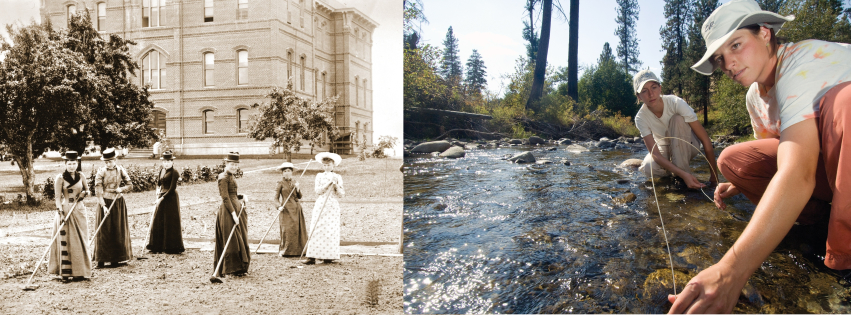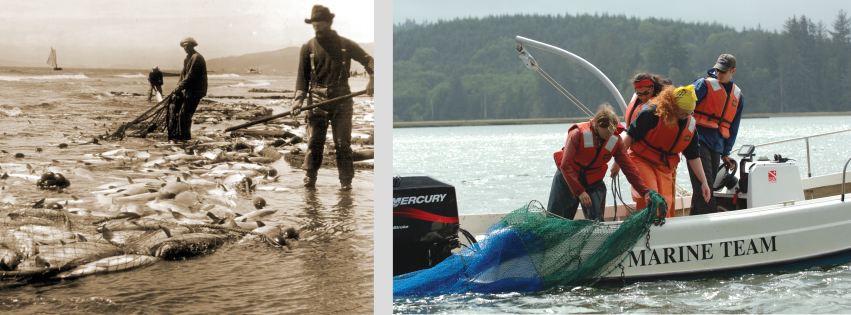Imagine a country where enemy combatants terrorize citizens at home and at work; where civil hostilities tear apart families; and where the largest share of the nation’s treasury fuels domestic warfare. That place was the United States in 1862. At that time, during the middle of the Civil War, Abraham Lincoln signed the law that created the states’ land-grant universities. Weeks earlier, Lincoln had signed the Homestead Act and established the U.S. Department of Agriculture. It would seem that the nation’s leaders, at a moment of national crisis, saw education and agriculture as necessary to national security.
How much do we still depend on education and agriculture? What is the legacy of the land-grant university in the 21st century?
Before 1862, higher education was a privilege for the wealthy, patterned after the European class system. A college education was generally available if you were wealthy, white, and male. You would study Latin, literature, law, or the classics at a private school. Education of the working class was left to guilds, where tradesmen instructed apprentices, or to seminaries, where clergymen taught religious novices. In the young United States, a few well-educated planters studied scientific agriculture, but generally it was the pioneering yeoman farmers who tilled the soil in the same way their grandfathers had back in the old country.
The idea of education for all people was revolutionary. There was nothing else like it in the world. At the beginning of the industrial revolution and the massive migration into the western United States, the land-grant universities represented a radical idea: public education is fundamental to the nation’s economic development.
Oregon Agricultural College was established in 1868 with funds from the sale of 90,000 acres in southeast Oregon that had been granted to the state by the federal government. The first class—one woman and two men—graduated in 1870 with Bachelor of Science degrees, the first degrees granted in the western United States by a state-supported university. OAC (Oregon Agricultural College) eventually became OSU (Oregon State University) in 1961, and it remains a leader among the nation’s land-grant universities.
With the radical idea that research was fundamental to the nation’s economic development, Congress passed the Hatch Act in 1888, which established a network of Agricultural Experiment Stations. And in 1914, at the onset of World War I, Congress passed the Smith-Lever Act that established the Extension Service to deliver research-based education to all people, reinforcing the idea that education is fundamental to a strong nation.
Oregon State University is Oregon’s land-grant university, and the radical ideas of public education, scientific research, and engagement with the public are written into its mission. Oregon’s Agricultural Experiment Station has 14 field stations across the state, where scientists are improving crops and ways to keep water clean and soil healthy. OSU Extension has faculty working in every county in the state, where they deliver research-based education to communities, industries, and youth.
The three-part mission of learning, discovery, and engagement is fundamental to OSU as a land-grant university and gives our work a sense of purpose and meaningful contributions to society. Those contributions have helped create a food system in the United States where less than two percent of the population is able to feed the other 98 percent of the population, in addition to huge numbers of people around the world.
“The Grand Challenge of agriculture is how to feed and care for a world population that is expected to reach 9 billion by mid-century,” said Dan Arp, dean of OSU’s College of Agricultural Sciences and director of the Oregon Agricultural Experiment Station. “We must ensure a sustainable planet with clean water and air, healthy soil, ample energy, and a sense of dignity in work and life. These are the goals of our land-grant mission of research, teaching, and extension.”

Crop improvement by OSU researchers has increased quality and yields of Oregon’s grains and vegetables for generations. Today, most of the wheat grown in the Pacific Northwest and many of the vegetables you buy in the market are varieties developed by OSU plant breeders.

Women have been part of the land grant mission from the first graduating class. A horticulture class prepares a vegetable garden with scientific precision in the late 1800s. Today, graduate students lay fiber-optic cable in a tributary of the John Day River to measure incremental changes in water temperature.

Innovations come and go, such as the Bugmobile entomologists used to sweep insects in the field. Today’s entomologists are at the forefront in helping people combat pests in schools and in orchards.

Fisheries management has changed dramatically since the late 1800s, when seines set at the mouths of coastal rivers captured salmon returning to spawn. Today, fisheries science students use smaller seines to examine the life in coastal bays, an ecosystem that salmon depend on for survival.

Since its beginning in 1911, OSU Extension has sent OSU faculty into the field to deliver education where it counts. Today, Extension instructor Nick Andrews helps a grower identify insects captured in a sticky trap.